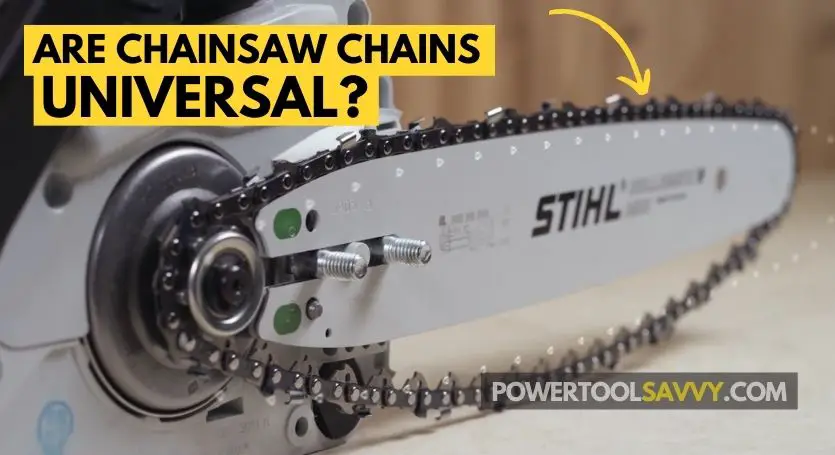
I get this question a lot from newbies: “Hey, are chainsaw chains universal?”
Chainsaw chains are not universal. If a chain fits your chainsaw, doesn’t mean that it’ll fit any. You need to choose the right chain for your chainsaw, ensuring it aligns with the 3 key specifications of your guide bar: pitch, gauge, and drive link count.
I’m Samuel Anali, and I’ve been in the chainsaw game for over two decades, trying out all sorts of chains along the way.
In this article, I’m spilling the beans on:
Picking the right chain for your saw,
Figuring out the size that suits your needs,
Nailing the art of measuring a chainsaw chain like a PRO,
Checking out the various types of chains, and a bunch more.
Are you ready?
Let’s get started.
Table of Contents
ToggleHow to Choose the Right Size Chain for a Chainsaw?
In order to choose the right chain for your chainsaw, you mainly need to consider 3 things:
- Chain pitch
- Chain gauge
- The number of drive links
Chain Pitch
Chain pitch is the distance between three consecutive rivets divided by 2. The common chain pitches are – ¼”, ¼” P, 3/8” P, 3/8”, .325”, and .404”.
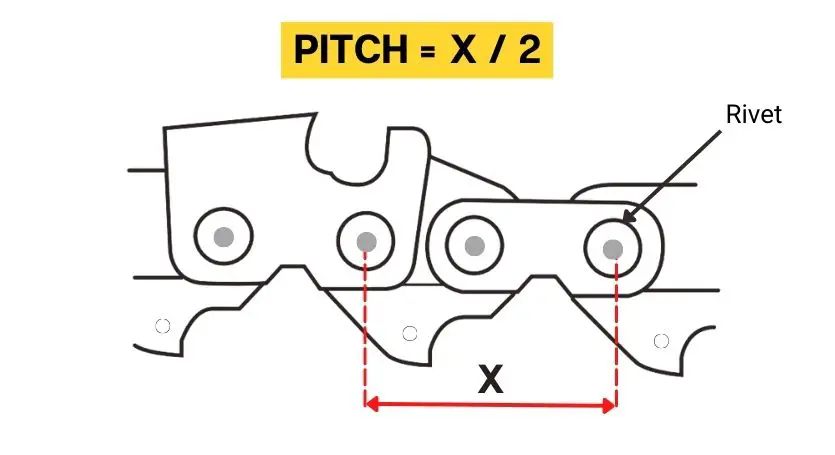
To get the right chain for your saw, you need to make sure that it has the same pitch as your guide bar.
If you look closely, you’ll see that your guide bar has the pitch size stamped on it.
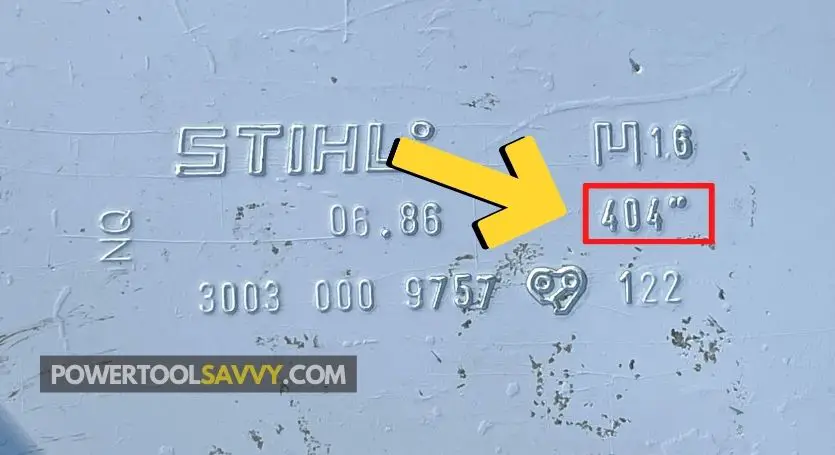
Chain Gauge
Chain gauge refers to the thickness of the drive links. The common chain gauges are – .043″ (1.1mm), .050″ (1.3mm), .058″ (1.5mm), and .063″ (1.6mm).
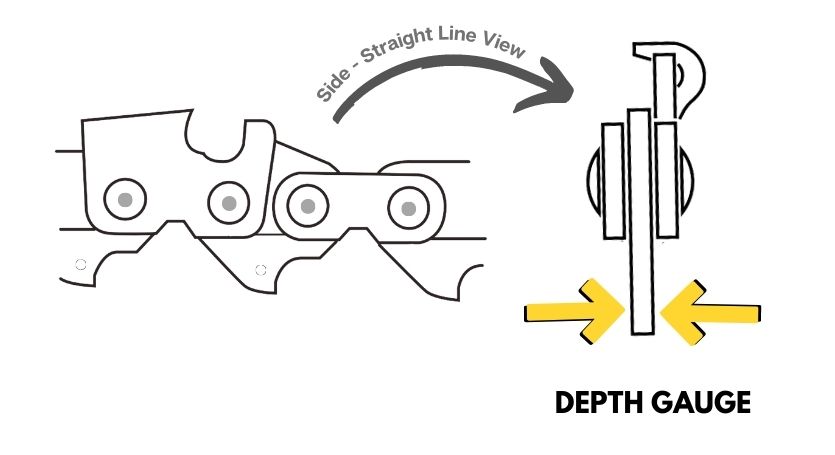
When buying a replacement chain for your saw, you need to make sure that the gauge of the chain matches the gauge of your guide bar.
Otherwise? The chain won’t fit into the bar groove!
Like chain pitch, you can find the required gauge size stamped on your guide bar.
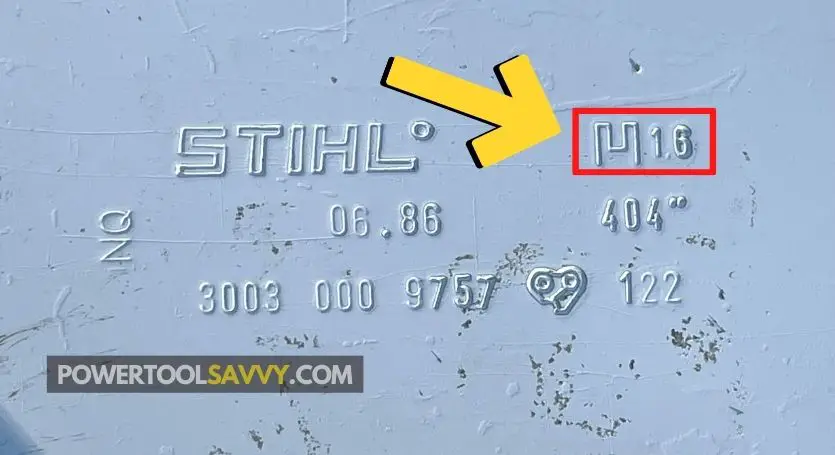
The Number of Drive Links
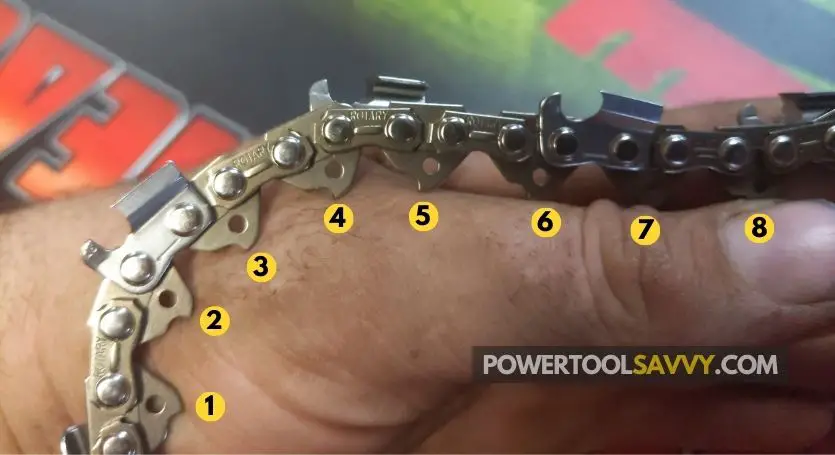
Drive links are the bottom parts of your chain that fit into the guide bar and make contact with the sprocket, driving the chain around the bar.
The number of drive links your chain has determines its length. And it’s important to know the number of drive links you need when replacing your chain.
Longer bar = more drive links; shorter bar = fewer drive links.
So, when picking a chain, make sure it has the right number of drive links for your bar length.
Don’t worry, it’s also usually listed on the guide bar.
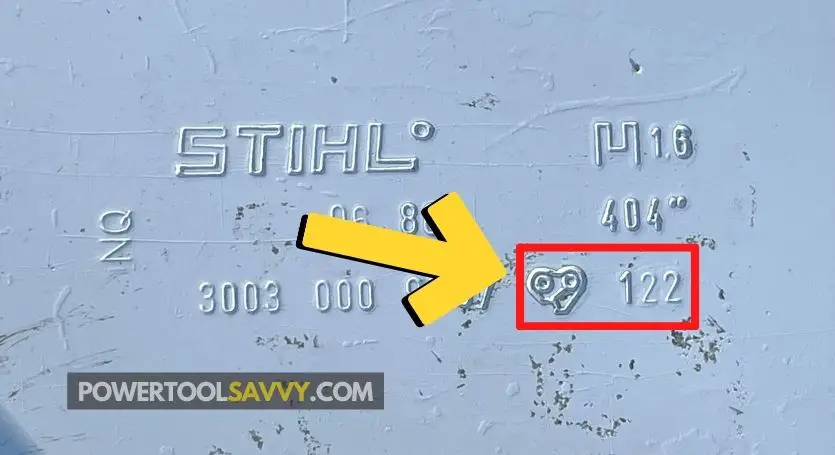
Once you have all these 3 numbers (pitch, gauge, and drive links) figured out, you can choose the right chain for your saw!
Other Things You Should Consider while Buying a Chainsaw Chain
Pitch, gauge, and drive link count are the three key factors to keep in mind when selecting a chain for your chainsaw. (No room for mistakes with those!)
But there are a few other aspects you should pay attention to. For example –
Saw Chain Cutter Types
Depending on the cutter types, saw chains are mainly divided into 4 basic styles:

- Low-profile (Also known as “Picco”): Probably the most common cutter type on chainsaw chains. It’s easier to file & great for small tasks (although not the top choice for professionals).
- Semi-chisel: Cuts slower than chisel ones, but stays sharp for longer. Also, it’s easier to file.
- Chisel: By far the most popular cutter type for professional jobs. Fast cutting, & easier to grind. But dulls quickly!
- Square chipper: Named after its square radius edge and grind profile. Offers faster cutting, but tends to lose its edge rapidly in abrasive conditions.
Saw Chain Aggressiveness
The aggressiveness of a chain determines how fast or slow it cuts through wood.
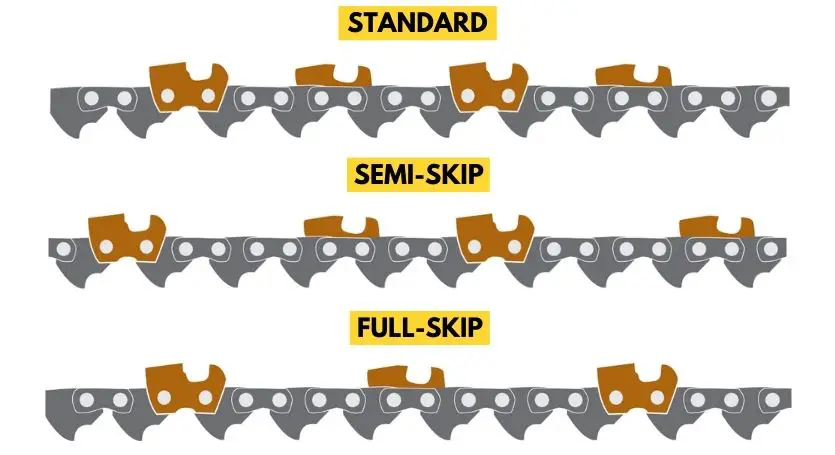
- Standard chain: These chains are known to be the “least aggressive.” They have one tie strap between each cutter, which enables them to produce buttery smooth smooth cuts.
- Semi-skip chain: Think of these as the middle ground between full-skip and standard chains. They have two tie straps between each cutter, giving you a faster cutting speed than the standard ones.
- Full-skip chain: With tree tie straps between each cutter, these are the most aggressive. The perks? Better chip clearance & quicker sharpening time. (But they do come with a side of extra vibration!)
Kickback Safety Features
Yup! chainsaw chains also do come with kickback safety features, like –
- Bumper drive links,
- Bumper tie straps,
- Ramped depth gauge,
- Wide track depth gauge, etc.
Sure, these added features might bump up the price a bit, but when it comes to SAFETY, it’s a worthwhile investment!
Can You Use a Different Brand Chain on Your Chainsaw?
Yes, you can use any brand chain on your chainsaw. The key is to match the chain’s pitch, gauge, and drive link count with your guide bar.
Now, how do you determine if a chain from a different brand is compatible with your chainsaw?
Well, you might have noticed that every chainsaw chain has a number stamped on the drive links. That number holds the details about the size & type of the chain.
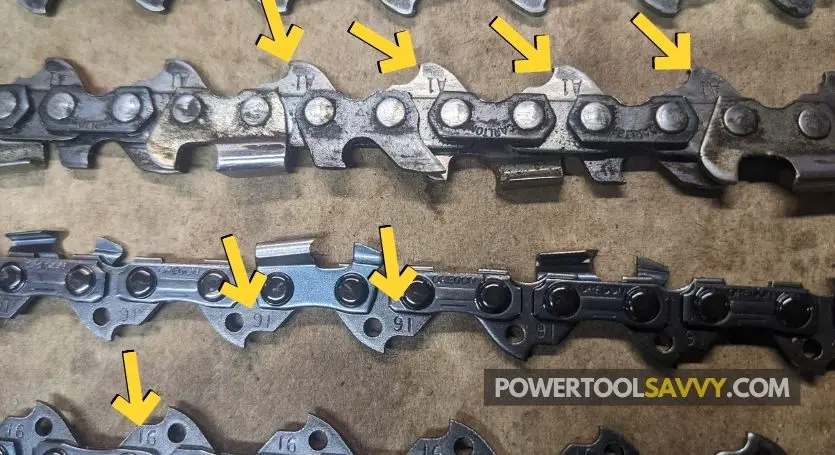
Every brand has its own set of numbers to identify the size and type. And you can use that number to determine whether or not a chain is compatible with your saw.
Chainsaw Chain Cross Reference Compatibility Chart
Calm down!
No need to dive into extensive research and compatibility tests. I’ve taken care of the heavy lifting for you!
I’ve created a comprehensive chainsaw chain cross-reference compatibility chart to simplify your search for compatible chains across different brands.
Check out the complete chart below: 👇
| Chain Pitch | Chain Gauge | Woodland | Carlton | Husqvarna | Oregon | Stihl | Windsor | McCulloch | Dolmar |
|---|---|---|---|---|---|---|---|---|---|
| 1/4" | .043" (1.1mm) | 71SC | - | - | - | 71 | - | - | - |
| 1/4" | .050" (1.3mm) | 13SC, 10SC | E1MC | H00 | 25 | 13 | 50K | 13RM | - |
| 3/4" | .122" (3.0mm) | 71(H) | G7S | - | 11 | - | 3HC | - | - |
| 3/8" | .050" (1.3mm) | 30SC(S), 30RC(S), 30RP | A1EP, A1LM | H51, H47, H46, H80, H475, H82 | 72 | 33 | 50A | PM370, SPR370, M370 | 100, 92 |
| 3/8" | .058" (1.5mm) | 38RC, 38RP | A2EP, A2LM | H54, H48, H42, H81, H48S | 73 | 35 | 58 | SPR378 | 99 |
| 3/8" | .063" (1.6mm) | 33RC, 36RCS, 33RP | A3EP, A3LM | H50, H45, H83 | 75 | 36 | 63 | PM373, SPR373 | 110 |
| .325" | .043" (1.1mm) | - | - | - | 80 | - | - | - | - |
| .325" | .050" (1.3mm) | 20NK, 20SC, 20RC, 20RCS | K1NK, K1CL, K1C | H30, H22, H23, H27, H78 | 95, 20, 33 | 23 | 50J | PM320, SPR320 | 82 |
| .325" | .058" (1.5mm) | 28RC | K2C, K2L | H25, H21 | 21, 34 | 25 | 58J | SPR328 | 083, 686 |
| .325" | .063" (1.6mm) | 23RC, 23SC | K3C, K3L | H26 | 22, 35 | 26 | 63J | - | - |
| .404" | .063" (1.6mm) | 43RC(S), 43RP, 46RCS | B3EP, B3LM, B3H, B3M | H64, H57, H65 | 27, 68, 16 | 46 | 63B, HC | PM403, SPR403 | 103, 108 |
| .404" | .080" (2.0mm) | 48H(X) | B5M | - | 19, 18 | 40 | 2HC | - | - |
All you need to do is find the number stamped on the drive links of your current chain and refer to this cross-reference chart.
You’ll find all the compatible chains from other popular brands like Stihl, Husqvarna, Oregon, Carlton, and the list goes on.
For example, If you’ve got an Oregon chain that has 72 stamped on the drive links and you want to switch to a Stihl chain, you can easily find out that the compatible Stihl chains are 33RS or 36RM using this chart.
Easy peasy!
How Do You Know if You have the Right Size Chain?
Picture this: you’ve got a fresh chainsaw chain, but you’re not sure if it’s the right size for your chainsaw.
So, how do you check?
Well, just hit yourself with these two questions: 👇
- What size chainsaw chain do I have?
- What size chain does my bar require?
What Size Chain Do You Have?
First things first, check out the size details on your chain package. Look for the pitch, gauge, and the number of drive links.
For example, here’s an Oregon chain that has a .325″ Pitch, .050″ (1.3mm) Gauge, and 78 drive links.
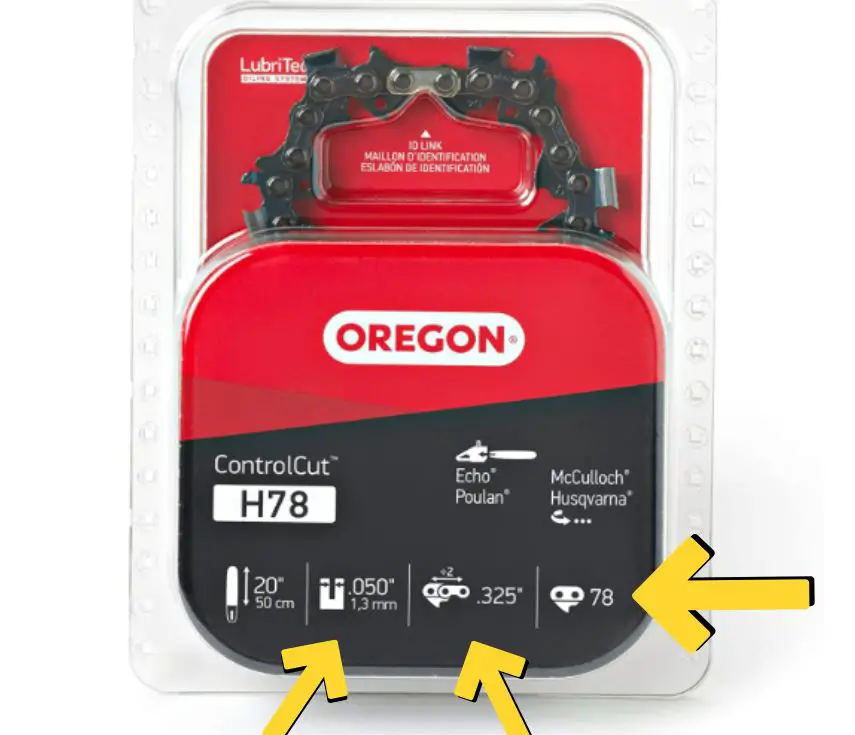
No package in sight? No worries!
Just head back up to the compatibility chart to figure out its size.
What Size Chain Does Your Bar Require?
Now that you’ve got all the numbers, it’s time to align them with the specs mentioned on your guide bar.
For instance, here’s a bar that requires a .325″ Pitch, .050″ (1.3mm) Gauge, and 78 drive links. So, it matches perfectly with the chain mentioned above.
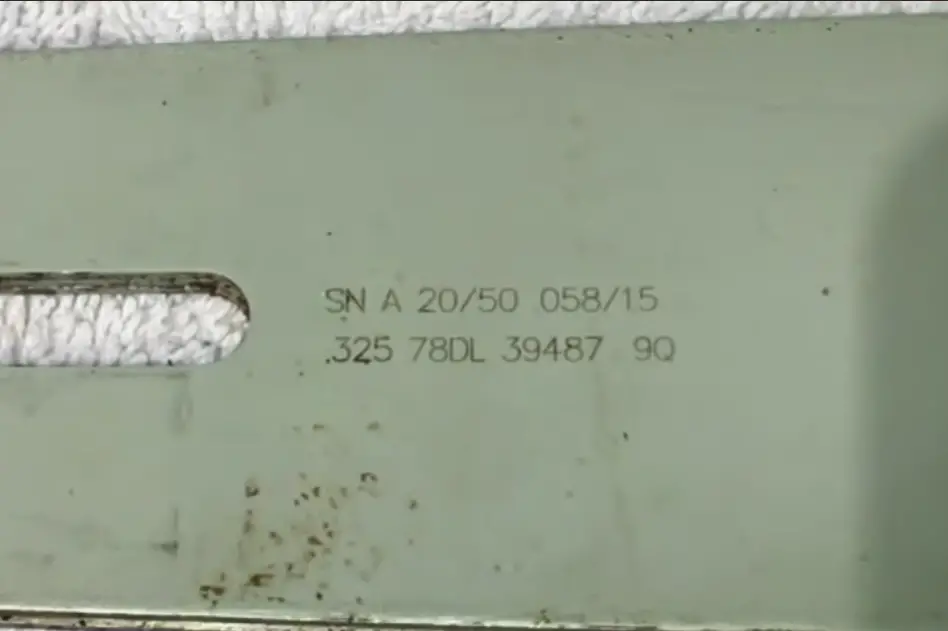
If the measurements don’t line up, you’ve got the wrong chain on your hands. No worries, just return it and snag the right one.
What if there’s nothing written on the bar? 🤔
In that case, refer to your chainsaw user manual or contact the nearest dealer.
Why Won't My Chain Fit My Chainsaw?
It could be a damaged guide bar, burred drive links, or a handful of other issues.
But the most common troublemaker? You might simply have the wrong size chain for your chainsaw.
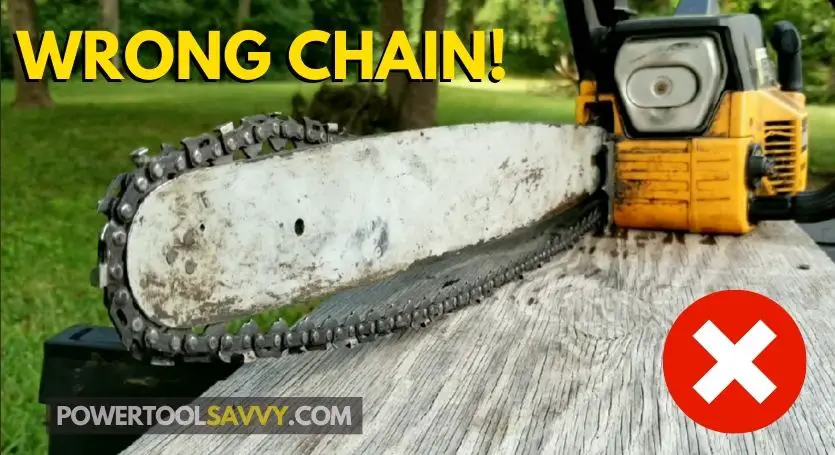
Chances are, the chain you’ve got on hand might have a longer pitch or a higher gauge than your saw requires.
So, if you’re grappling with this hiccup, give the chain and bar sizes a double-check.
And, if you’re convinced you’ve got the right sizes, it’s time to inspect the bar. Check out this article where I’ve explained the signs of a worn-out bar!
Related F.A.Q.s
1. Will a Husqvarna Chain Fit on a Stihl Chainsaw?
A Husqvarna chain will fit on a Stihl chainsaw. The key is to make sure the pitch, gauge, and number of drive links match what’s stamped on your guide bar. For instance, if your Stihl bar is .325″ Pitch and .050″ (1.3mm) Gauge, you can go for a compatible Husqvarna chain, such as the H30, H22, H23, H27, or H78 chains.
2. Can I Use an Oregon Chain on a Stihl Chainsaw?
YES, you can use an Oregon chain on a Stihl chainsaw, given that the pitch, gauge, and number of drive links align with your bar requirements. For instance, if your Stihl bar has a .325″ Pitch and .050″ (1.3mm) Gauge, you’re good to go with Oregon 33, 20, and 95 chains, as they share the same specifications.
3. What Does "72" Mean on a Chainsaw Chain?
The number “72” on a chainsaw chain indicates its specifications, including the Pitch, Gauge, Number of Drive Links, Cutter type, and more. These numbers can vary depending on the brand and model. For example, if you spot the number 72 on an Oregon chain, it signifies a .3/8″ Pitch and .050″ (1.3mm) Gauge for that particular chain.

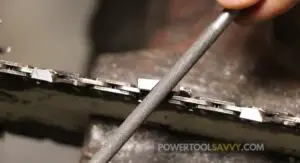
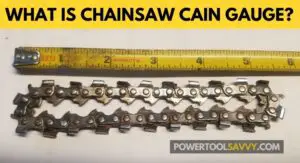
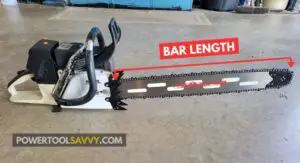
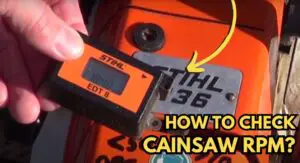

Pingback: 5 Reasons Why Your Chainsaw is Smoking (and How to Fix it)